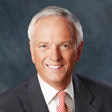Not All Fiduciaries Are Created Equal
There are different kinds of fiduciaries, and some offer more layers of protection than others. So make sure you understand the nuances behind the designations.


Financial advisers who serve as fiduciaries, like those at my firm and me, live by a simple rule: Act in the best interests of our clients. This philosophy is the underpinning for the financial advisory industry’s “Fiduciary Standard.”
But the word “fiduciary” is truly a sophist’s dream. There’s a veritable alphabet soup of letters and numbers that can let certain actors play games with what the meaning of “fiduciary” truly obligates them to do and the way they must act.
Investors with money in their company’s 401(k) plan should know that there’s a difference between the two primary codified definitions of a fiduciary. The first is known as a 3(21) fiduciary; the second is a 3(38). These are both so-named for their sections under the Employment Retirement Income Security Act, or ERISA, which is administered by the Department of Labor.

Sign up for Kiplinger’s Free E-Newsletters
Profit and prosper with the best of expert advice on investing, taxes, retirement, personal finance and more - straight to your e-mail.
Profit and prosper with the best of expert advice - straight to your e-mail.
The distinction is important for sponsors and asset owners in company plans to know. The primary difference between a 3(21) and 3(38) fiduciary is that the former makes “recommendations” on plan assets, with the employer/plan sponsor having the final decision. In contrast, a 3(38) fiduciary has control and management of the plan assets fully delegated to them.
When is a Fiduciary Not a Fiduciary?
For many company plan sponsors and asset owners that do not possess the requisite time and/or talent under ERISA to administer their investments, an outsourced investment adviser may appear to be an ideal solution.
On its surface, hiring an adviser appears to “offshore” some of the liability inherent with managing a large and highly regulated pool of other people’s money. However, the simple act of hiring an adviser does not, in fact, mitigate the risk for the plan’s fiduciaries.
Under ERISA section 404(a)(1)(B), plan sponsor fiduciaries — such as those who administer 401(k) plans and the like — are required to exercise the “highest standard of care.” The law mandates that these fiduciaries act:
- “With the care, skill, prudence, and diligence under the circumstances then prevailing that a prudent man acting in a like capacity and familiar with such matters would use in the conduct of an enterprise of a like character and with like aims.”
This “prudent man” standard often comes into play when non-investment professional fiduciaries — such as employers who offer benefit plans to their workers — are put in the position of making investment decisions for others. This can create an immediate liability. There are several procedural criteria used by courts to determine if prudence was used that we won’t delve into here, but as you can see, fiduciary determinations and decisions are quite complex. This observation begins to make a strong case for outsourcing liability given these various legal gray areas.
One way plan sponsors can mitigate fiduciary liability is to hire a 3(21) or 3(38) fiduciary. This should be codified in your company’s management agreement and in an Investment Policy Statement (IPS) to document the processes and procedures around who is responsible for making investment decisions and why those decisions are being made. Just make sure you understand the difference in responsibility.
A truly outsourced investment fiduciary under ERISA is identified as a Section 3(38) fiduciary, so named for the 38th definition in the ERISA law. However, all fiduciaries for a retirement plan also fall under the definition of a Section 3(21) fiduciary.
It is important to note that while a section 3(21) fiduciary may de facto arise from certain actions and involvement with the plan’s assets, a 3(38) fiduciary designation must be accepted explicitly by the third party. Plan sponsors often assume that their investment adviser is a 3(38) fiduciary automatically, thereby absolving them of certain responsibilities. If, in fact, the investment adviser is only a 3(21) fiduciary, certain liabilities will be placed back on the shoulders of the plan sponsor.
Again, the complexities, vagaries and nuances of fiduciary rules under ERISA, combined with the severe consequences for even inadvertent violation, seem to mandate work with a true and knowledgeable fiduciary.
The bottom line for investors is to check with your company's plan administrator to see exactly what kind of "fiduciary" is minding your money: A 3(38) fiduciary offers more protection — to your plan sponsor and to your own future."
In subsequent pieces we’ll unpack the byzantine nature of the ERISA world further, addressing questions such as:
- What's the difference between Suitability and Fiduciary, and why should you care?
- What does Rules vs. Principal regulation mean, and why should you care?
- If things go wrong, who's on the hook — your adviser, or you?
- How can you protect yourself?
Joseph F. Bert, CFP®, AIF®, the Founder of Certified Financial Group, Inc., has been in the financial planning profession since 1976. He is also President of Certified Advisory Corp. Joe is a CERTIFIED FINANCIAL PLANNER™ professional and a member of the Financial Planning Association where he served as its President and Chairman.
Get Kiplinger Today newsletter — free
Profit and prosper with the best of Kiplinger's advice on investing, taxes, retirement, personal finance and much more. Delivered daily. Enter your email in the box and click Sign Me Up.

Joe Bert, CFP® is the Chairman and CEO of Certified Financial Group, Inc. and has been in the financial planning profession since 1976. Joe can be heard every Saturday in Orlando, FL on News 96.5 FM at 9:00 a.m. EST hosting On the Money and seen twice weekly on the Fox TV affiliate, WOFL Fox 35. An experienced and knowledgeable financial planning practitioner, he has been affectionately referred to as the "Oracle of Orlando®" by his audience.
-
 How Baby Boomers and Gen Xers Are Redefining Retirement Living
How Baby Boomers and Gen Xers Are Redefining Retirement LivingBoth generations need to embrace change and leverage real estate as a dynamic asset in their retirement planning. Here's how financial advisers can help, too.
By David Conti, CPRC Published
-
 How Good Advisers Manage Risk in Challenging Markets
How Good Advisers Manage Risk in Challenging MarketsThey understand the difference between what might be real challenges to an investor's strategy and fear brought on by market volatility.
By Ryan L. Kirk, CFA® Published
-
 How Baby Boomers and Gen Xers Are Redefining Retirement Living
How Baby Boomers and Gen Xers Are Redefining Retirement LivingBoth generations need to embrace change and leverage real estate as a dynamic asset in their retirement planning. Here's how financial advisers can help, too.
By David Conti, CPRC Published
-
 How Good Advisers Manage Risk in Challenging Markets
How Good Advisers Manage Risk in Challenging MarketsThey understand the difference between what might be real challenges to an investor's strategy and fear brought on by market volatility.
By Ryan L. Kirk, CFA® Published
-
 Financial Planning's Paradox: Balancing Riches and True Wealth
Financial Planning's Paradox: Balancing Riches and True WealthWhile enough money is important for financial security, it does not guarantee fulfillment. How can retirees and financial advisers keep their eye on the ball?
By Richard P. Himmer, PhD Published
-
 A Confident Retirement Starts With These Four Strategies
A Confident Retirement Starts With These Four StrategiesWork your way around income gaps, tax gaffes and Social Security insecurity with some thoughtful planning and analysis.
By Nick Bare, CFP® Published
-
 Should You Still Wait Until 70 to Claim Social Security?
Should You Still Wait Until 70 to Claim Social Security?Delaying Social Security until age 70 will increase your benefits. But with shortages ahead, and talk of cuts, is there a case for claiming sooner?
By Evan T. Beach, CFP®, AWMA® Published
-
 Retirement Planning for Couples: How to Plan to Be So Happy Together
Retirement Planning for Couples: How to Plan to Be So Happy TogetherPlanning for retirement as a couple is a team sport that takes open communication, thoughtful planning and a solid financial strategy.
By Andrew Rosen, CFP®, CEP Published
-
 Market Turmoil: What History Tells Us About Current Volatility
Market Turmoil: What History Tells Us About Current VolatilityThis up-and-down uncertainty is nerve-racking, but a look back at previous downturns shows that the markets are resilient. Here's how to ride out the turmoil.
By Michael Aloi, CFP® Published
-
 Could You Retire at 59½? Five Considerations
Could You Retire at 59½? Five ConsiderationsWhile some people think they should wait until they're 65 or older to retire, retiring at 59½ could be one of the best decisions for your quality of life.
By Joe F. Schmitz Jr., CFP®, ChFC® Published